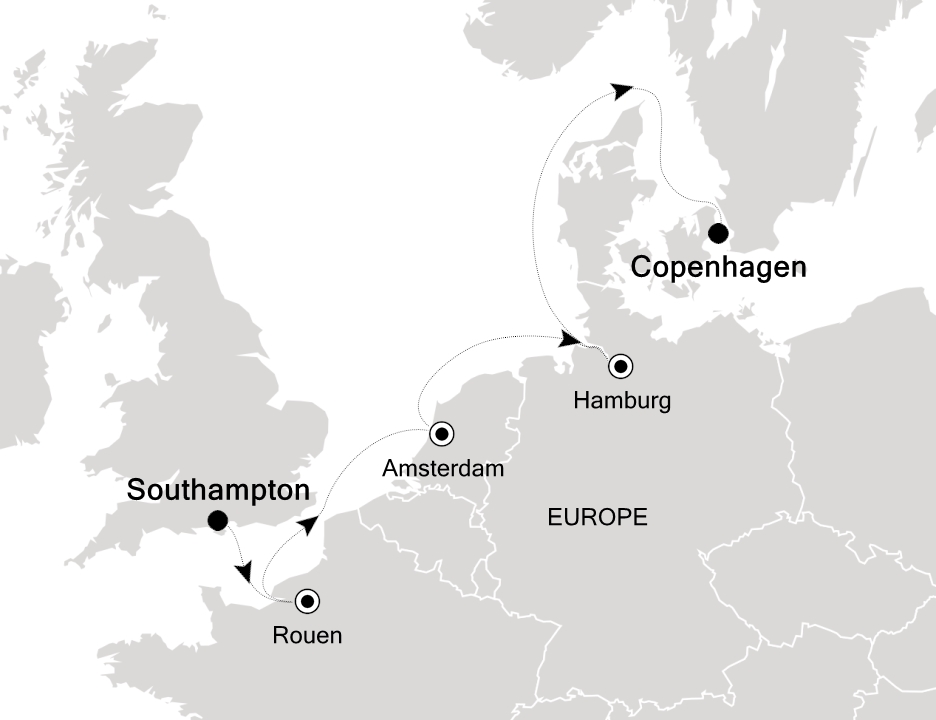

Go beyond your boundaries and explore the world as never before.
Southampton is England's leading passenger port. It is rich in historic embarkations, from Henry V's fleet bound for France and the battle of Agincourt to the Mayflower, the ill-fated Titanic, and the maiden voyages of the great ocean liners of the 20th century such as the Queen Mary and the Queen Elizabeth 2. Parts of the town center can seem mundane, having been hastily rebuilt after World War II bombing, but bits of the city's history emerge from between modern buildings. The Old Town retains its medieval feel, and some remnants of the old castellated town walls remain. Other attractions include a decent art gallery, extensive parks, and a couple of good museums. The Southampton Boat Show, a 10-day event in mid-September, draws huge crowds.
The Kingdom of Denmark is the geographical link between Scandinavia and Europe. Half-timber villages and tidy farms rub shoulders with towns and a few cities, where pedestrians set the pace, not traffic. In the capital, Copenhagen—København in Danish—mothers safely park baby carriages outside bakeries while outdoor cafés fill with cappuccino-sippers, and good looking Danes pedal to work in lanes thick with bicycle traffic. The town was a fishing colony until 1157, when Valdemar the Great gave it to Bishop Absalon, who built a castle on the site of what is now the parliament, Christiansborg. It grew as a center on the Baltic trade route and became known as købmændenes havn (merchants' harbor) and eventually København.
In the 15th century it became the royal residence and the capital of Norway and Sweden. From 1596 to 1648 Christian IV, a Renaissance king obsessed with fine architecture, began a building boom that crowned the city with towers and castles, many of which still stand. They're almost all that remain of the city's 800-year history; much of Copenhagen was destroyed by two major fires in the 18th century and by British bombing during the Napoleonic Wars.
Today’s Copenhagen has no glittering skylines and little of the high-stress bustle of most capitals. The morning air in the pedestrian streets of the city's core is redolent of baked bread and soap-scrubbed storefronts. If there's such a thing as a cozy city, this is it.
World Cruise Finder's suites are some of the most spacious in luxury cruising.
Request a Quote - guests who book early are rewarded with the best fares and ability to select their desired suite.












